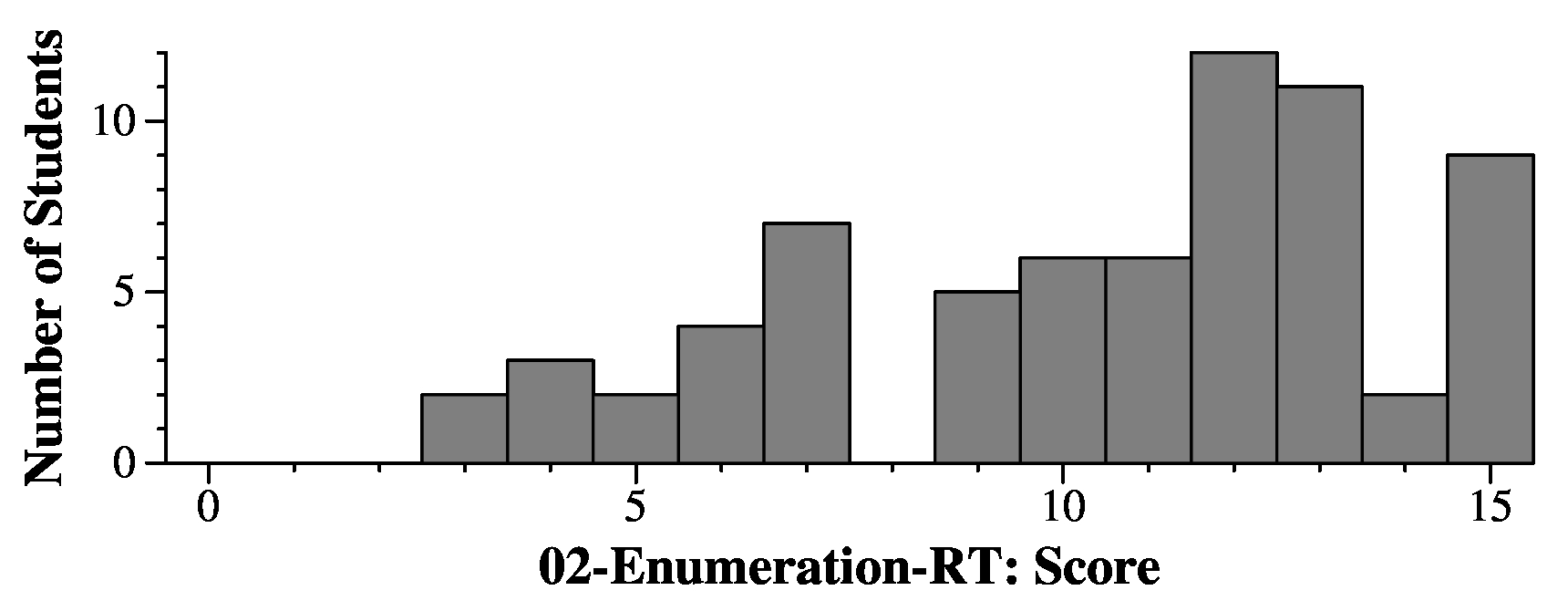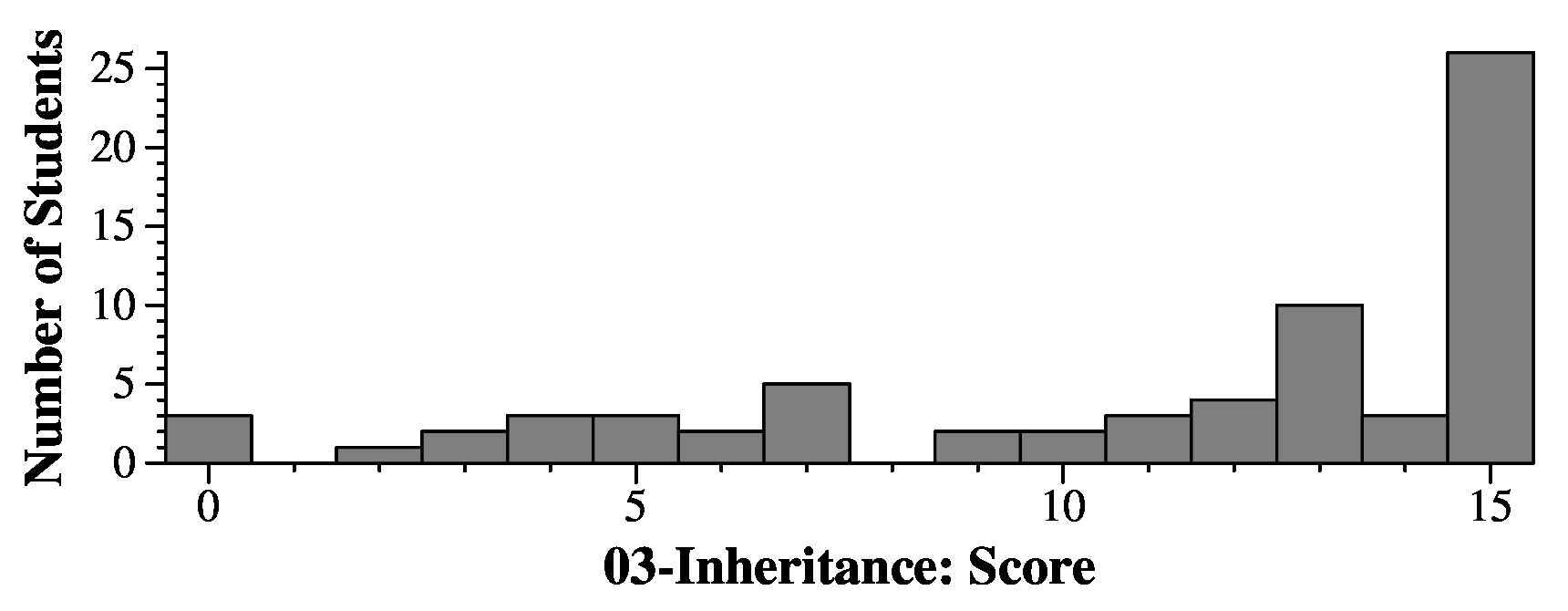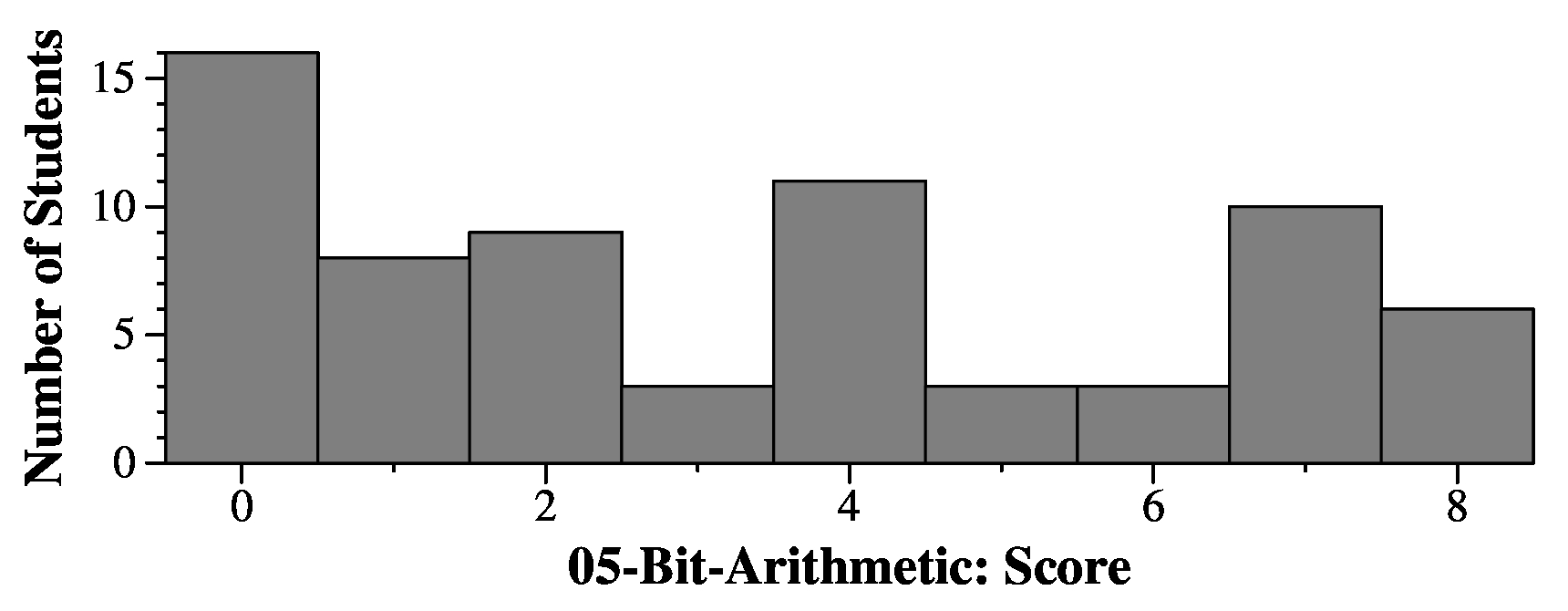 |
Union(0, 1); Union(Find(0), 2); Union(Find(0), 3);Then your tree is going be either:
0
/|\
/ | \
1 2 3
|
or
1
/|\
/ | \
0 2 3
|
So the performance will be:
if (v[i]) d->Union(0, i); |
In that case, you'll either get the first picture above, or you'll get an error with the Union() call, because 0 is not a set it.
For that reason, I gave full credit for O(n) "Error". I did not give gredit to O(1) (for exiting prematurely with an error), because the Initialize() call is O(n). I gave 1.8 points for O(alpha(n)). Even though it's not correct, I'm giving it "nearly" full credit, because the typo may have been confusing.
Unfortunately, both this and problem 11 were named proc_b3229(), so I call this one "proc_b3229 #1", as it has one argument. I call problem 11 "proc_b3229 #2".
if (v[i]) d->Union(0, i);
|
That would either run to completion as node 0 would be the root of the set, or it would print an error. Regardless, the Initialize() code is O(n), so the answer is O(n).
z.push_back(x->second); |
Then the loop will be O(m). Instead, because "x[nit->first]" calls x.find(), the push_back() call is O(log m). So the answer is O(m log m).
 |
These came from a bank. These answers are for the example exam.
Part A: There are 265 ways to have 5 lower-case letters, and 104 ways to have four single numeric digits. Therefore, the answer is: (265)(104).
Part B: This is equal to the number of 6 digit numbers in base 17: (176).
Part C: 17 choose 5, plain and simple: C(17,5) or C(17,12).
Part D: This is equal to the number of permutations of the colors: (12!).
Part E: This is the power set of the juices: (212).
Grading: Three points per. You lost 0.25 points if you didn't follow the instructions, and gave me, for example (17!)/(5!12!) instead of C(17,12). I gave some partial credit, but not a huge amount.
 |
"In scenario 2, since we are told inheritance is employed, this means that the super class A will define at least one member variable that B and C will each have as part of their subclass. A could also define common procedures for B and C, but what makes it inheritance is the member variable definition being in the super-class and not the individual sub-classes.
"Scenario 2 (inheritance) will lead to problems over the lifetime of a software project as it makes it very difficult to modify what the member variables of your sub-classes are. Suppose as you get farther along in a project, you decide that a sub-class could me made more efficient by changing one of its inherited member variables to a different type. Inheritance demands that you now have to go and modify the definition in the super-class and update every sub-class's implementation to match, instead of being able to keep the change local to the specific sub-class you were trying to optimize in the first place."
 |
int DisjointSetByRankWPC::Find(int e)
{
vector <int> nodes;
size_t i;
while (links[e] != -1) {
nodes.push_back(e);
e = links[e];
}
for (i = 0; i < nodes.size(); i++) links[nodes[i]] = e;
return e;
}
|
A recursive solution is even simpler:
int DisjointSetByRankWPC::Find(int e)
{
if (links[e] == -1) return e;
links[e] = Find(links[e]);
return links[e];
}
|
If you lost points for "convoluted structure", then your code may have worked, but the structure was convoluted enough to be illogical or at the very least quite hard to read. Here's an example:
int DisjointSetByRankWPC::Find(int e)
{
vector <int> nodes;
size_t i;
bool done;
int next_node;
done = false;
while (done == false) {
next_node = links[e];
if (next_node == -1)
for (i = 0; i < nodes.size(); i++) nodes[i] = e;
return e;
}
if (links[e] != -1) {
nodes.push_back(e);
}
if (next_node != -1) {
e = next_node;
}
}
}
|
Let me show the things here that make the code hard to read:
 |
unsigned int reverse(unsigned int v)
{
int rv, i;
rv = 0;
for (i = 0; i < 32; i++) {
if (v & (1 << i)) rv |= (1 << (31-i));
}
return rv;
}
|
unsigned int reverse(unsigned int v)
{
int rv, i;
rv = 0;
for (i = 0; i < 32; i++) {
rv <<= 1;
rv |= (v & 1);
v >>= 1;
}
return rv;
}
|
BTW, here's ChatGPT's answer:
 |
I wish I could say that none of you used this answer in your answers, but I cannot say that :(.
 |
Here is an answer that works with binary search:
double zero(const vector < vector <double> > &v)
{
int start;
int size;
int mid;
double x1, y1, x2, y2;
start = 0;
size = v.size();
while (size > 1) { /* The binary search is straight from the lecture notes. */
mid = start + size/2;
if (v[mid][0] < 0) {
start = mid;
size -= size/2;
} else {
size = size/2;
}
}
x1 = v[start][0];
y1 = v[start][1];
x2 = v[start+1][0];
y2 = v[start+1][1];
return y1 - (x1 * (y2-y1) / (x2-x1));
}
|
The majority of you gave me an iterative solution, where you looped from 0 until you found the first positive number. That is a suboptimal algorithm, since it is O(n) rather than O(log n) as binary search is. With that solution, your maximum score was 8.
You'll note that ChatGPT doesn't use binary search, and it handles a case that the problem writeup says will not happen.
 |
I'm happy to report that no one used this solution, which would have received an 8.
 |